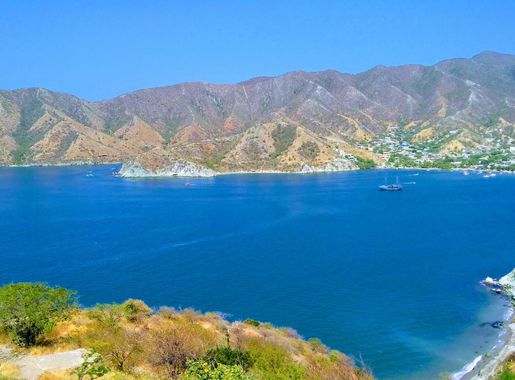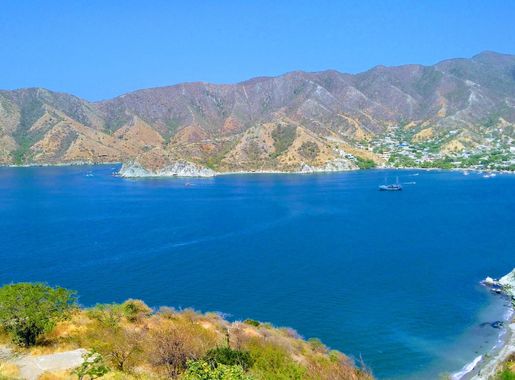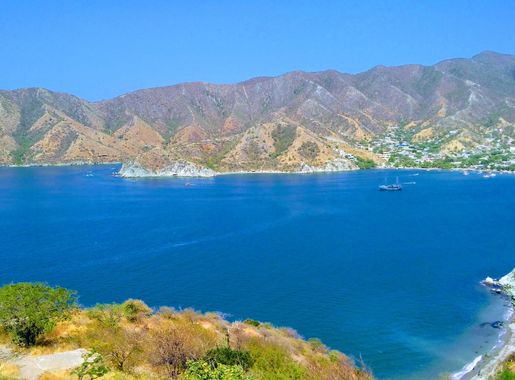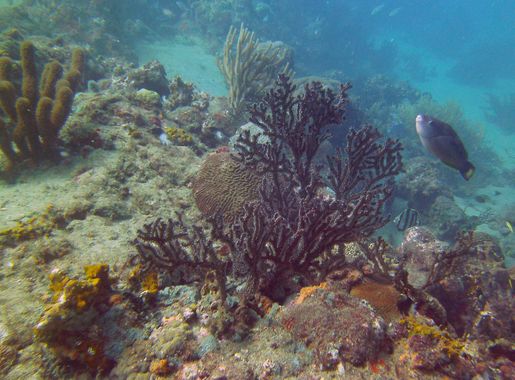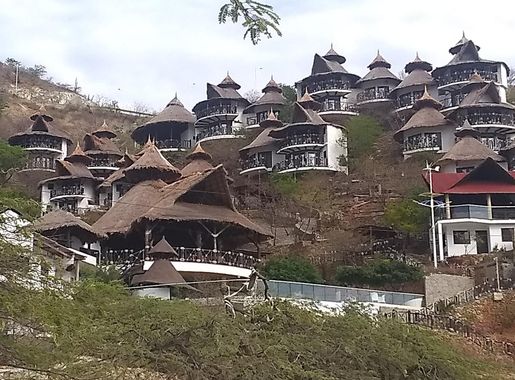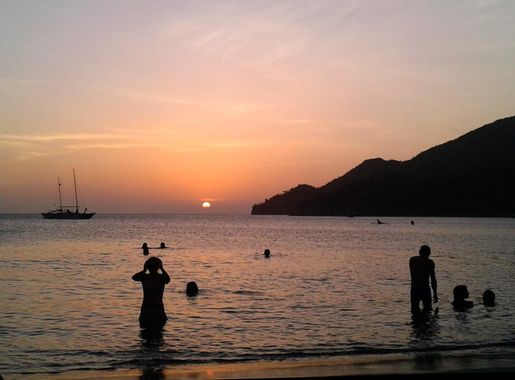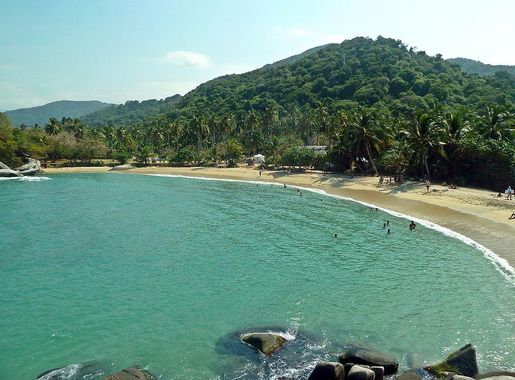
Taganga: A Hidden Gem on Colombia's Caribbean Coast
Discover Taganga: A charming fishing village in Santa Marta, Colombia, offering stunning sunsets, fresh seafood, and access to Tayrona National Park's natural beauty.
Nestled between the Sierra Nevada mountains and the turquoise waters of the Caribbean Sea, Taganga is a small fishing village that offers a unique blend of natural beauty and cultural richness. Just a short drive from the bustling city of Santa Marta, this charming destination is perfect for those looking to escape the crowds and immerse themselves in a more laid-back, authentic Colombian experience. Taganga is renowned for its stunning sunsets, which paint the sky in vibrant hues of orange, pink, and purple. The village's main beach is lined with rustic fishing boats and local seafood restaurants, where visitors can savor freshly caught fish and traditional dishes like ceviche and arepas. The relaxed atmosphere and friendly locals make it easy to feel at home in this coastal paradise. Beyond its picturesque beaches, Taganga is also a gateway to some of Colombia's most breathtaking natural attractions. The nearby Tayrona National Park offers pristine beaches, lush jungles, and diverse wildlife, making it a must-visit for nature enthusiasts. For those interested in underwater adventures, Taganga is a popular spot for diving and snorkeling, with several dive shops offering excursions to nearby coral reefs teeming with marine life. Whether you're seeking adventure, relaxation, or a taste of local culture, Taganga has something for everyone. Its unique blend of natural beauty, cultural charm, and outdoor activities make it an unforgettable destination on Colombia's Caribbean coast.
Local tips in Taganga
- Visit in the off-season (April to November) to avoid crowds and enjoy a more peaceful experience.
- Bring cash, as many local businesses do not accept credit cards.
- Hire a local guide if planning to hike in Tayrona National Park for the best experience and safety.
- Try the local seafood, especially at beachfront restaurants for the freshest catch.
- Respect local customs and traditions, as Taganga is a close-knit and traditional community.
Taganga: A Hidden Gem on Colombia's Caribbean Coast
Nestled between the Sierra Nevada mountains and the turquoise waters of the Caribbean Sea, Taganga is a small fishing village that offers a unique blend of natural beauty and cultural richness. Just a short drive from the bustling city of Santa Marta, this charming destination is perfect for those looking to escape the crowds and immerse themselves in a more laid-back, authentic Colombian experience. Taganga is renowned for its stunning sunsets, which paint the sky in vibrant hues of orange, pink, and purple. The village's main beach is lined with rustic fishing boats and local seafood restaurants, where visitors can savor freshly caught fish and traditional dishes like ceviche and arepas. The relaxed atmosphere and friendly locals make it easy to feel at home in this coastal paradise. Beyond its picturesque beaches, Taganga is also a gateway to some of Colombia's most breathtaking natural attractions. The nearby Tayrona National Park offers pristine beaches, lush jungles, and diverse wildlife, making it a must-visit for nature enthusiasts. For those interested in underwater adventures, Taganga is a popular spot for diving and snorkeling, with several dive shops offering excursions to nearby coral reefs teeming with marine life. Whether you're seeking adventure, relaxation, or a taste of local culture, Taganga has something for everyone. Its unique blend of natural beauty, cultural charm, and outdoor activities make it an unforgettable destination on Colombia's Caribbean coast.
Iconic landmarks you can’t miss
Playa Taganga
Explore the beauty and adventure of Playa Taganga, a hidden gem on Colombia's Caribbean coast with stunning beaches and vibrant culture.
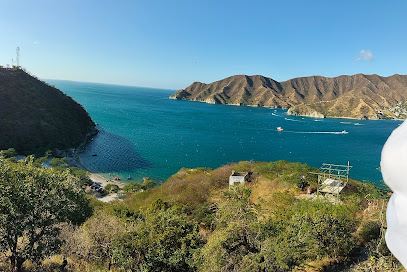
Bahía de Taganga
Discover Bahia de Taganga, a captivating coastal village in Colombia known for its stunning beaches, vibrant marine life, and rich cultural experiences.
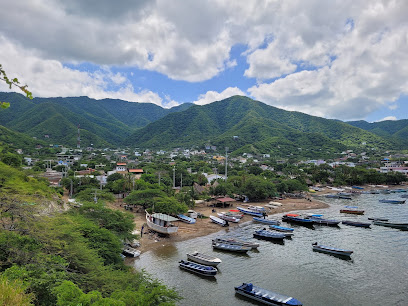
Taganga Park
Discover the beauty of Taganga Park, a coastal paradise offering stunning views, vibrant culture, and endless adventures in the heart of Taganga.
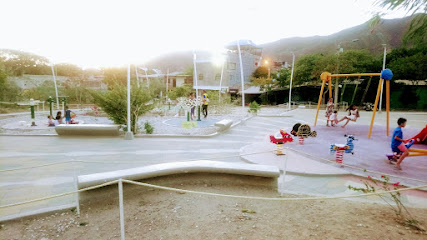
Centro Cultural y Turístico Casa del Patrimonio de Taganga
Discover the vibrant culture and rich heritage of Taganga at the Centro Cultural y Turístico Casa del Patrimonio, a must-visit destination for travelers.
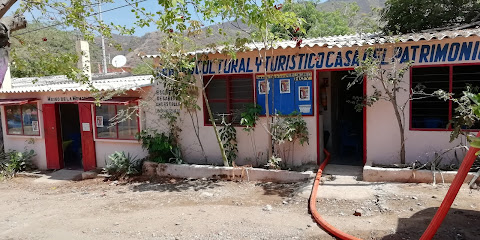
taganga - Carrera 1, Magdalena, Colombia
Discover Taganga: A charming coastal village in Colombia with rich history, stunning beaches, and vibrant local culture - perfect for every traveler.
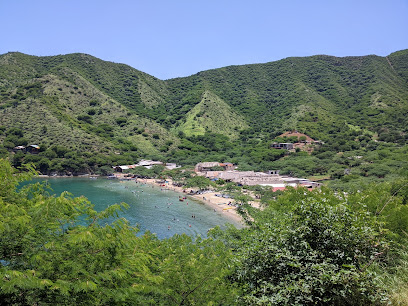
Vía Sta. Marta - Taganga, Santa Marta, Magdalena, Colombia
Discover the stunning coastal views and rich cultural heritage of Vía Sta. Marta - Taganga in Santa Marta, Colombia, a must-visit historic landmark.
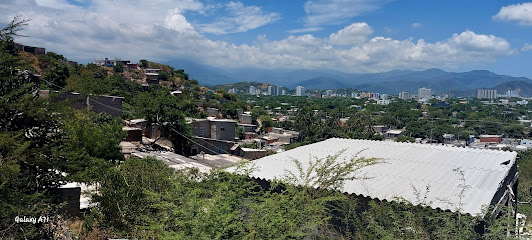
Museo de la Memoria de Taganga
Explore the rich heritage of Taganga at the Museo de la Memoria, where history, culture, and community come together in a captivating experience.

PLAYA DIVANGA
Experience the serene beauty of Playa Divanga, a tranquil beach destination in Taganga, Colombia, perfect for relaxation, dining, and adventure.

PUEBLO DE TAGANGA
Experience the tranquil beauty and vibrant culture of Taganga, a hidden gem on Colombia's Caribbean coast, perfect for relaxation and adventure.
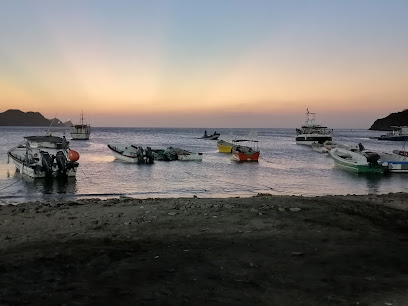
Sunset in Taganga, Atardecer en Taganga
Discover the mesmerizing sunsets in Taganga, where vibrant colors meet serene waters, creating unforgettable memories on Colombia's Caribbean coast.
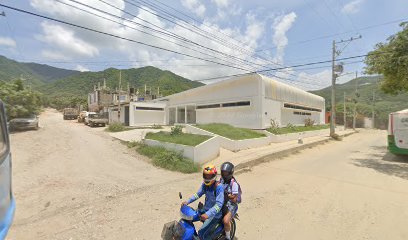
Unmissable attractions to see
Museo del Oro Tairona - Casa de la Aduana
Explore the captivating history of the Tairona civilization at Museo del Oro Tairona, a treasure trove of gold artifacts and cultural heritage in Santa Marta.
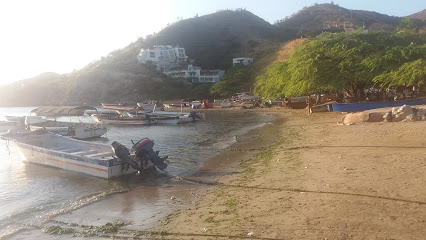
Playa Grande, Taganga
Discover the beauty and vibrancy of Playa Grande, a stunning beach in Taganga perfect for relaxation, adventure, and unforgettable sunsets.
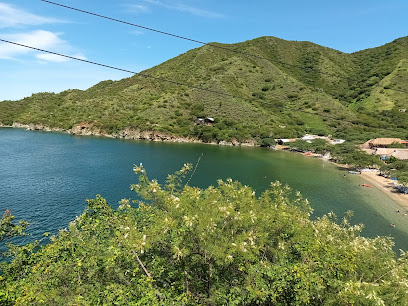
Playa Taganga
Experience the beauty and culture of Playa Taganga, a charming fishing village in Colombia perfect for relaxation and adventure.
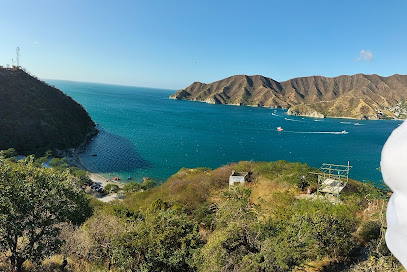
Bahía de Taganga
Explore Bahía de Taganga: A Caribbean paradise with stunning views, vibrant culture, and unforgettable adventures await you.
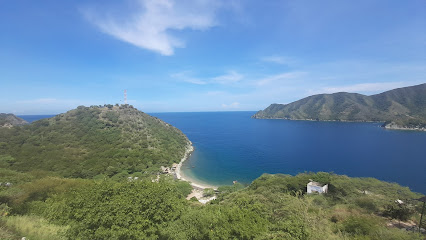
Playaca
Explore Playaca, a picturesque tourist attraction in Santa Marta, where golden beaches meet vibrant culture and stunning natural beauty.

Playa Grande Taganga
Experience the natural beauty and vibrant culture of Playa Grande Taganga, a must-visit beach destination in Santa Marta, Colombia.
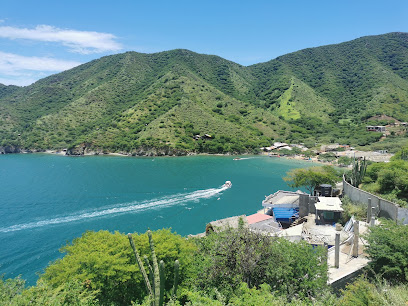
PUEBLO DE TAGANGA
Taganga: A charming fishing village along the Colombian Caribbean, perfect for relaxation, adventure, and cultural exploration.
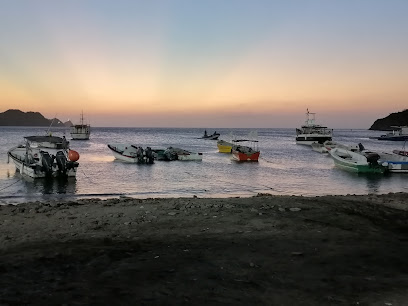
PLAYA DIVANGA
Experience the tranquil beauty of Playa Divanga, a hidden gem on Colombia's Caribbean coast, perfect for sunbathing and water sports.
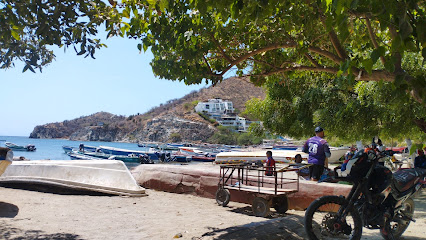
Sunset in Taganga, Atardecer en Taganga
Discover the breathtaking sunsets of Taganga, where vibrant colors meet the Caribbean sea, creating unforgettable moments for every traveler.
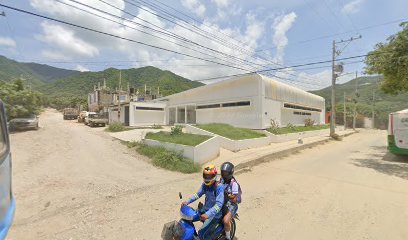
Essential places to dine
Pachamama Restaurante Bar
Discover Pachamama Restaurante Bar in Taganga: savor exquisite grilled dishes with breathtaking ocean views in a vibrant coastal setting.
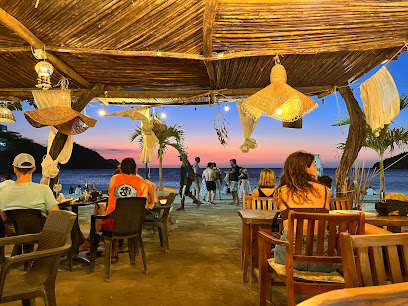
Babaganoush Restaurante-Bar
Experience exquisite Italian flavors amidst breathtaking views at Babaganoush Restaurante-Bar in scenic Taganga.

El Muelle Taganga
Experience authentic Caribbean cuisine at El Muelle Taganga, where fresh seafood meets breathtaking ocean views.
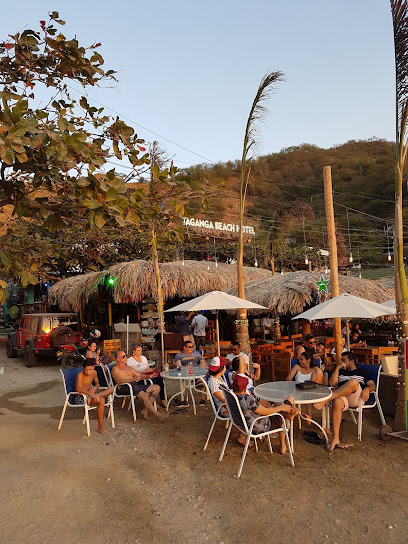
Fatto in casa Taganga
Experience authentic Italian cuisine at Fatto in Casa Taganga – from handmade pizzas to exquisite pastries in a charming coastal setting.

Restaurante Bitacora
Experience authentic Colombian seafood at Restaurante Bitacora in Taganga—where every meal is a celebration of flavor and coastal beauty.
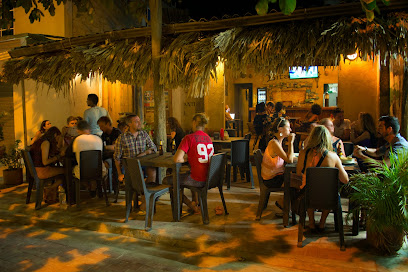
Divanga Bar & Restaurant
Experience exquisite French cuisine at Divanga Bar & Restaurant in Taganga, where every dish is a celebration of flavor amidst stunning coastal views.

Blue Restaurant Bar
Experience authentic Colombian cuisine at Blue Restaurant Bar in Taganga – where delightful flavors meet stunning ocean views.

Restaurante La Ballena Azúl
Experience authentic Colombian seafood at Restaurante La Ballena Azúl in Taganga, where ocean views meet culinary delight.
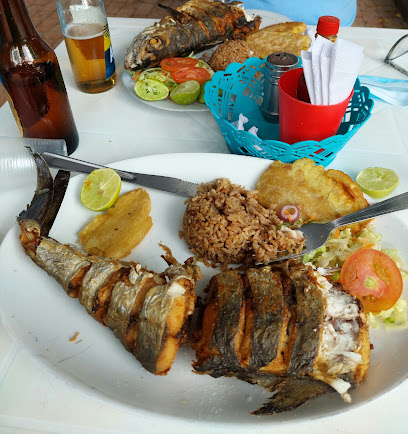
RESTAURANTE DUNKARINKA
Experience authentic Colombian flavors with stunning seaside views at Restaurante Dunkarinka in Taganga.

Ambos Mundos Restaurant
Experience authentic Colombian cuisine at Ambos Mundos Restaurant in Taganga - where flavor meets breathtaking ocean views.
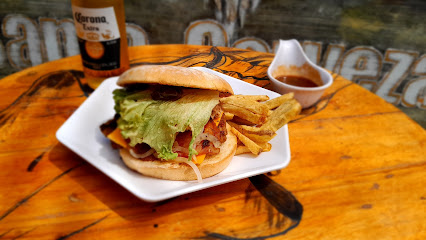
Markets, malls and hidden boutiques
Taganga
Discover Taganga: A Coastal Haven for Water Sports, Relaxation, and Cultural Richness in Colombia's Caribbean.
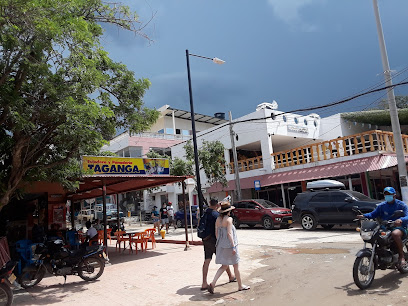
Artesanias El Casique
Explore the charm of Taganga with unique handcrafted treasures from Artesanias El Casique, a gift shop showcasing the best of Colombian artistry.

Souvenirs Ninané
Discover local artistry and vibrant crafts at Souvenirs Ninané, Taganga's premier art supply store and cultural hub.

Estanco y panadería taganga
Discover fresh baked goods and local treasures at Estanco y Panadería Taganga, a charming store in the heart of Taganga, Santa Marta.
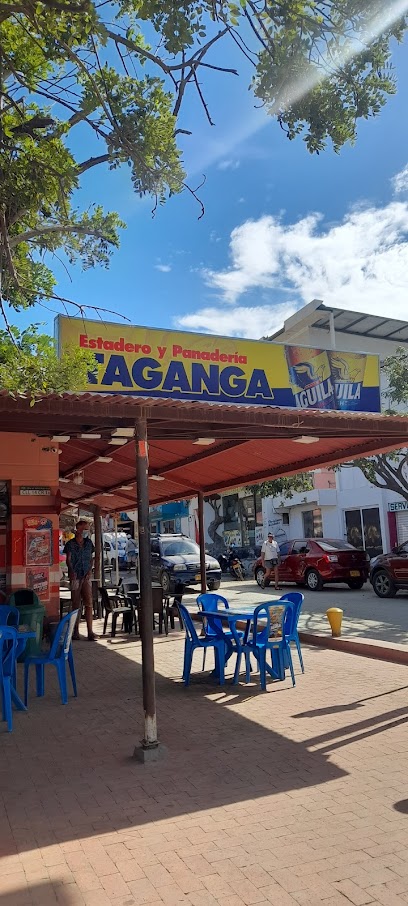
Artesanias Rosikarly
Discover unique handcrafted souvenirs at Artesanias Rosikarly in Taganga, where Colombian culture and artistry come to life.

Rastalandia Artesanías
Explore Rastalandia Artesanías in Taganga for unique Colombian crafts that celebrate local artistry and culture, perfect for souvenirs and gifts.
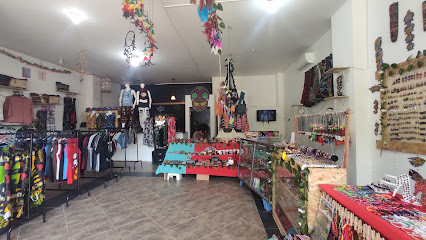
La Nube
Discover La Nube in Taganga, a unique cutlery store showcasing exquisite local craftsmanship and quality kitchen essentials.

Diva Expe
Discover unique fashion treasures at Diva Expe, the vibrant clothing store in Taganga, Santa Marta, reflecting the essence of Caribbean style.

Mad'as Moda y Diseño
Explore Mad'as Moda y Diseño in Taganga for stylish swimwear and unique fashion accessories that enhance your beach experience.
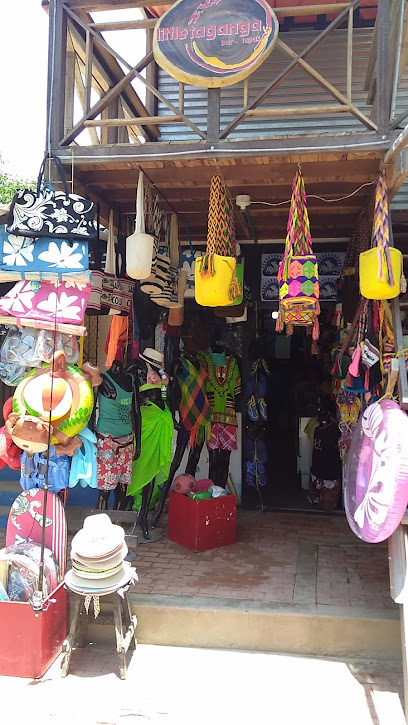
Moda Molas
Explore Moda Molas: A vibrant clothing store in Taganga, Santa Marta, showcasing unique fashion inspired by Colombian culture.

Essential bars & hidden hideouts
Pachamama Restaurante Bar
Discover the vibrant flavors of Pachamama Restaurante Bar in Taganga, where fresh grill dishes and unique cocktails await every tourist.
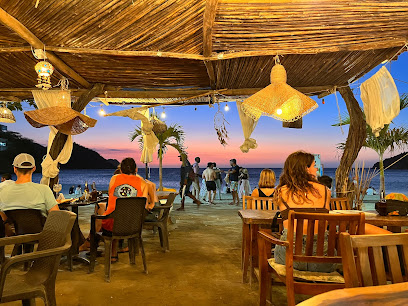
Babaganoush Restaurante-Bar
Experience the flavors of Italy with a local twist at Babaganoush Restaurante-Bar in Taganga, where every meal is a celebration of culinary artistry.
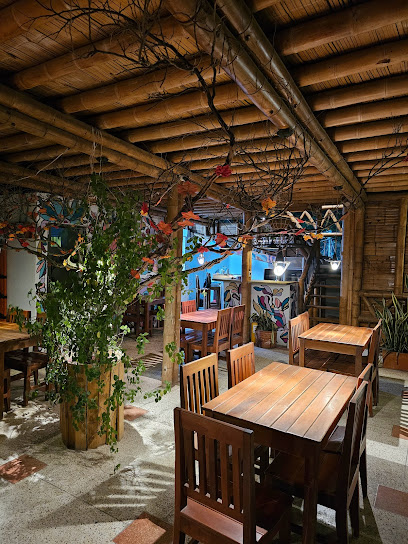
Casita del Mar
Experience the essence of coastal living at Casita del Mar, a vibrant bar and eatery in Taganga offering fresh seafood and stunning ocean views.
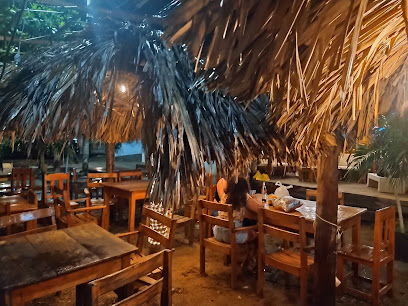
BEAT BEACH
Experience the vibrant nightlife of Taganga at Beat Beach, where live music and tropical vibes create unforgettable memories.
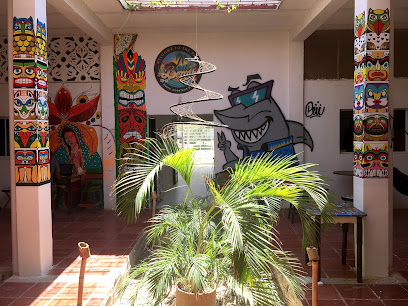
Divanga Bar & Restaurant
Discover the culinary delights of Divanga Bar & Restaurant, where French cuisine meets the coastal charm of Taganga, creating an unforgettable dining experience.
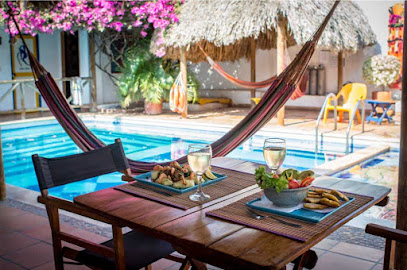
Hostel Mirador, Taganga Bar
Experience the perfect blend of relaxation and vibrant social life at Hostel Mirador, Taganga Bar, where stunning views meet local culture.
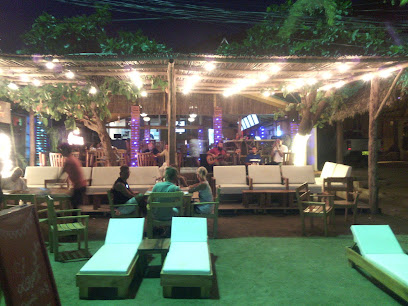
Love Restaurante Bar
Discover the vibrant atmosphere and delicious local cuisine at Love Restaurante Bar in Taganga, a perfect seaside retreat for tourists.
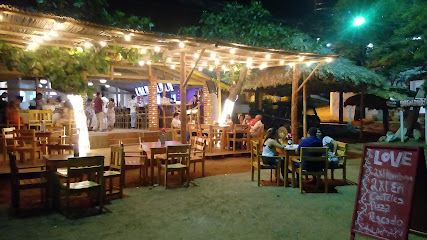
Tagangol
Discover the vibrant nightlife at Tagangol, a lively bar in Taganga offering stunning views, local drinks, and cultural experiences.
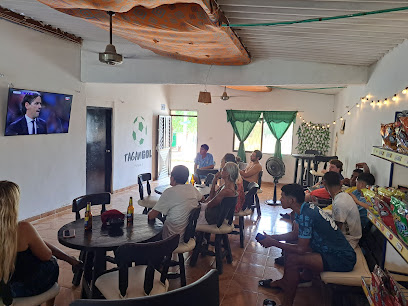
KALBALA Cafe - Bar
Discover the perfect blend of relaxation and excitement at KALBALA Cafe - Bar in Taganga, where vibrant atmosphere meets stunning seaside views.
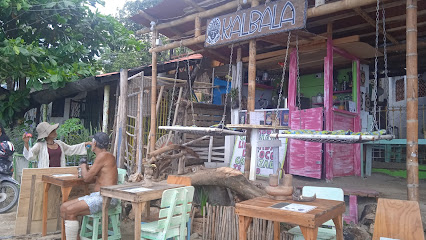
Baco's Beer Garden by Ambos Mundos
Experience Baco's Beer Garden in Taganga, where exceptional beers meet stunning coastal views in a relaxed atmosphere.
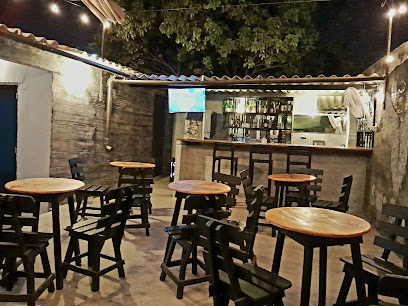
Cocco bar beach
Experience the serene charm of Cocco Bar Beach, where refreshing drinks and stunning views create the perfect tropical escape in Santa Marta.
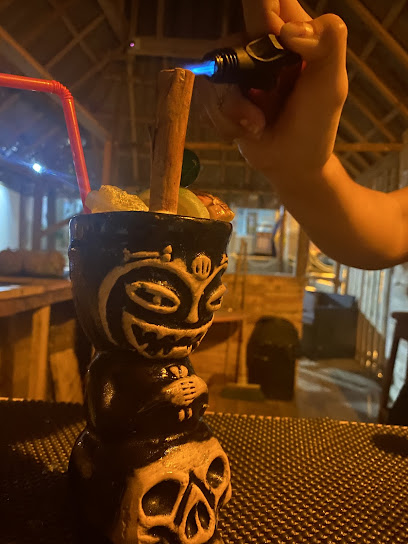
Monkey Drinks
Discover the vibrant nightlife and delicious cocktails at Monkey Drinks, Taganga's top bar for travelers and locals alike.
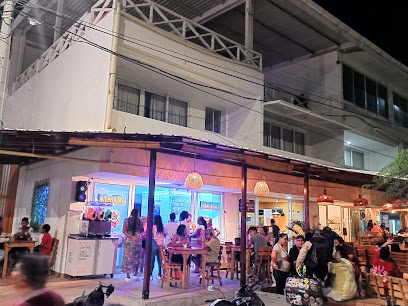
Mirador Hostel, Bar de Taganga
Discover the vibrant social scene and breathtaking views at Mirador Hostel, Bar de Taganga, your perfect spot for relaxation and fun.
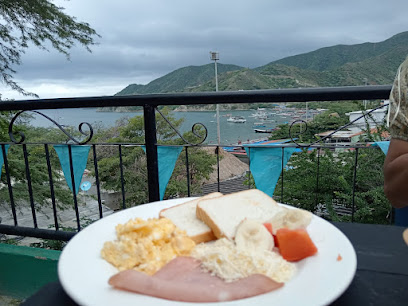
Local Phrases
-
- HelloHola
[oh-lah] - GoodbyeAdiós
[ah-dee-ohs] - YesSí
[see] - NoNo
[noh] - Please/You're welcomePor favor/De nada
[pohr fah-bohr/deh nah-dah] - Thank youGracias
[grah-see-ahs] - Excuse me/SorryPerdón/Lo siento
[pehr-dohn/loh see-ehn-toh] - How are you?¿Cómo estás?
[koh-moh ehs-tahs] - Fine. And you?Bien. ¿Y tú?
[byehn. ee too] - Do you speak English?¿Hablas inglés?
[ah-blahs een-glehs] - I don't understandNo entiendo
[noh ehn-tee-ehn-doh]
- HelloHola
-
- I'd like to see the menu, pleaseQuisiera ver el menú, por favor
[kee-see-eh-rah behr ehl meh-noo, pohr fah-bohr] - I don't eat meatNo como carne
[noh koh-moh kahr-neh] - Cheers!¡Salud!
[sah-lood] - I would like to pay, pleaseQuisiera pagar, por favor
[kee-see-eh-rah pah-gahr, pohr fah-bohr]
- I'd like to see the menu, pleaseQuisiera ver el menú, por favor
-
- Help!¡Ayuda!
[ah-yoo-dah] - Go away!¡Vete!
[veh-teh] - Call the Police!¡Llama a la policía!
[yah-mah ah lah poh-lee-see-ah] - Call a doctor!¡Llama a un médico!
[yah-mah ah oon meh-dee-koh] - I'm lostEstoy perdido/a
[ehs-toy pehr-dee-doh/ah] - I'm illEstoy enfermo/a
[ehs-toy ehn-fehr-moh/ah]
- Help!¡Ayuda!
-
- I'd like to buy...Quisiera comprar...
[kee-see-eh-rah kohm-prahr] - I'm just lookingSolo estoy mirando
[soh-loh ehs-toy mee-rahn-doh] - How much is it?¿Cuánto cuesta?
[kwan-toh kwehs-tah] - That's too expensiveEso es demasiado caro
[eh-soh ehs deh-mah-see-ah-doh kah-roh] - Can you lower the price?¿Puedes bajar el precio?
[pweh-dehs bah-hahr ehl pree-eh-soh]
- I'd like to buy...Quisiera comprar...
-
- What time is it?¿Qué hora es?
[keh oh-rah ehs] - It's one o'clockEs la una
[ehs lah oo-nah] - Half past (10)Las diez y media
[lahs d-yehs ee meh-dee-ah] - MorningMañana
[mah-nyah-nah] - AfternoonTarde
[tahr-deh] - EveningNoche
[noh-cheh] - YesterdayAyer
[ah-yehr] - TodayHoy
[oy] - TomorrowMañana
[mah-nyah-nah] - 1Uno
[oo-noh] - 2Dos
[dohs] - 3Tres
[trehs] - 4Cuatro
[kwah-troh] - 5Cinco
[seen-koh] - 6Seis
[sehs] - 7Siete
[syeh-teh] - 8Ocho
[oh-choh] - 9Nueve
[nweh-veh] - 10Diez
[dyehs]
- What time is it?¿Qué hora es?
-
- Where's a/the...?¿Dónde está...?
[dohn-deh ehs-tah] - What's the address?¿Cuál es la dirección?
[kwal ehs lah dee-rehk-syohn] - Can you show me (on the map)?¿Puedes mostrarme (en el mapa)?
[pweh-dehs mohs-trahr-meh (ehn ehl mah-pah)] - When's the next (bus)?¿Cuándo es el próximo (autobús)?
[kwan-doh ehs ehl prohk-see-moh (ow-toh-boos)] - A ticket (to ....)Un tiquete (para ....)
[oon tee-keh-teh (pah-rah)]
- Where's a/the...?¿Dónde está...?
History of Taganga
-
Taganga's history is deeply intertwined with the indigenous communities that inhabited the region long before the arrival of the Spanish. The area was originally home to the Tayrona people, who thrived in the Sierra Nevada mountains and along the Caribbean coast. They established complex societies, engaged in agriculture, and left behind significant archaeological sites that reflect their rich cultural heritage.
-
With the arrival of Spanish conquistadors in the 16th century, Taganga began to transform. The Spanish exploited the region's natural resources and established settlements. Taganga was recognized as a fishing village, which became an essential part of the economy of Santa Marta, Colombia's oldest city, founded in 1525. The village's proximity to Santa Marta facilitated trade and interaction between colonizers and indigenous populations.
-
Throughout the 19th and 20th centuries, Taganga developed a strong identity as a fishing community. Fishermen relied on traditional methods, and the village became known for its artisanal fishing practices. The vibrant local culture is reflected in the daily lives of its residents, who maintain customs rooted in both indigenous and Spanish influences, including traditional fishing techniques and local cuisine.
-
In recent decades, Taganga has evolved into a popular tourist destination, attracting visitors for its stunning beaches and vibrant marine life. The increase in tourism has led to economic opportunities but also challenges, including environmental concerns and cultural preservation. Local initiatives aim to balance tourism development with the preservation of Taganga's unique cultural and historical identity.
-
As tourism continues to grow, there have been concerted efforts to protect Taganga's natural environment and cultural heritage. Community organizations work towards sustainable fishing practices and the conservation of marine ecosystems, while also promoting Taganga's rich history through cultural events and festivals that celebrate the village's heritage and traditions.
Taganga Essentials
-
Taganga is located just 4 kilometers from Santa Marta's city center. You can reach Taganga by taking a local bus from the main bus terminal or the downtown area, which costs around 2,000 COP. Taxis are also available and can take you directly to Taganga for approximately 20,000 COP. Alternatively, you can walk along the scenic coastal road, which takes about 45 minutes.
-
Taganga is a small fishing village, making it easy to explore on foot. Most attractions are within walking distance. For longer distances or if you want to explore the surrounding areas, local taxis and motorbike taxis (moto-taxis) are readily available. Bicycles can also be rented from local shops for a more leisurely exploration.
-
Taganga is generally safe for tourists; however, it is wise to remain cautious. Avoid walking alone at night, especially towards isolated beaches. Be mindful of your belongings, especially in crowded areas. Areas around the beach may have petty theft; securing valuables in your accommodation is advisable. It is recommended to stay alert and avoid displaying valuable items.
-
In case of emergency, dial 123 for police assistance or 125 for medical emergencies. The nearest hospital is in Santa Marta, approximately 10 minutes away by taxi. It is advisable to have travel insurance that covers medical emergencies. For minor issues, local pharmacies are available in Taganga.
-
Fashion: Do wear light, breathable clothing suitable for the tropical climate. Don’t wear overly revealing outfits, especially when visiting local religious sites. Religion: Do respect local customs and traditions. When visiting churches, dress modestly. Public Transport: Do be courteous and patient when using local transport. Don’t engage in loud conversations. Greetings: Do greet locals with a friendly smile or 'Hola'. A handshake is common. Eating & Drinking: Do try local seafood dishes and enjoy fresh juices. Don’t drink tap water; always consume bottled water.
-
To experience Taganga like a local, visit the fishing docks early in the morning to see the catch of the day. Engage with local fishermen, as they are often friendly and willing to share their stories. Don’t miss the opportunity to enjoy a meal at a local seafood restaurant; trying the 'sancocho' (fish stew) is highly recommended. Explore nearby beaches, such as Playa Grande, by taking a short boat ride for a less crowded experience.
Trending Landmarks in Taganga
-
Playa Taganga
-
Bahía de Taganga
-
Taganga Park
-
Centro Cultural y Turístico Casa del Patrimonio de Taganga
-
taganga - Carrera 1, Magdalena, Colombia
-
Vía Sta. Marta - Taganga, Santa Marta, Magdalena, Colombia
-
Museo de la Memoria de Taganga
-
PLAYA DIVANGA
-
PUEBLO DE TAGANGA
-
Sunset in Taganga, Atardecer en Taganga
Nearby Cities to Taganga
-
Things To Do in Barranquilla
-
Things To Do in Riohacha
-
Things To Do in Cartagena
-
Things To Do in Sincelejo
-
Things To Do in Cúcuta
-
Things To Do in Oranjestad
-
Things To Do in Palm Beach
-
Things To Do in Sero Blanco
-
Things To Do in Tanki Leendert
-
Things To Do in Noord
-
Things To Do in Paradera
-
Things To Do in Pos Chiquito
-
Things To Do in Savaneta
-
Things To Do in Santa Cruz
-
Things To Do in San Nicolas

